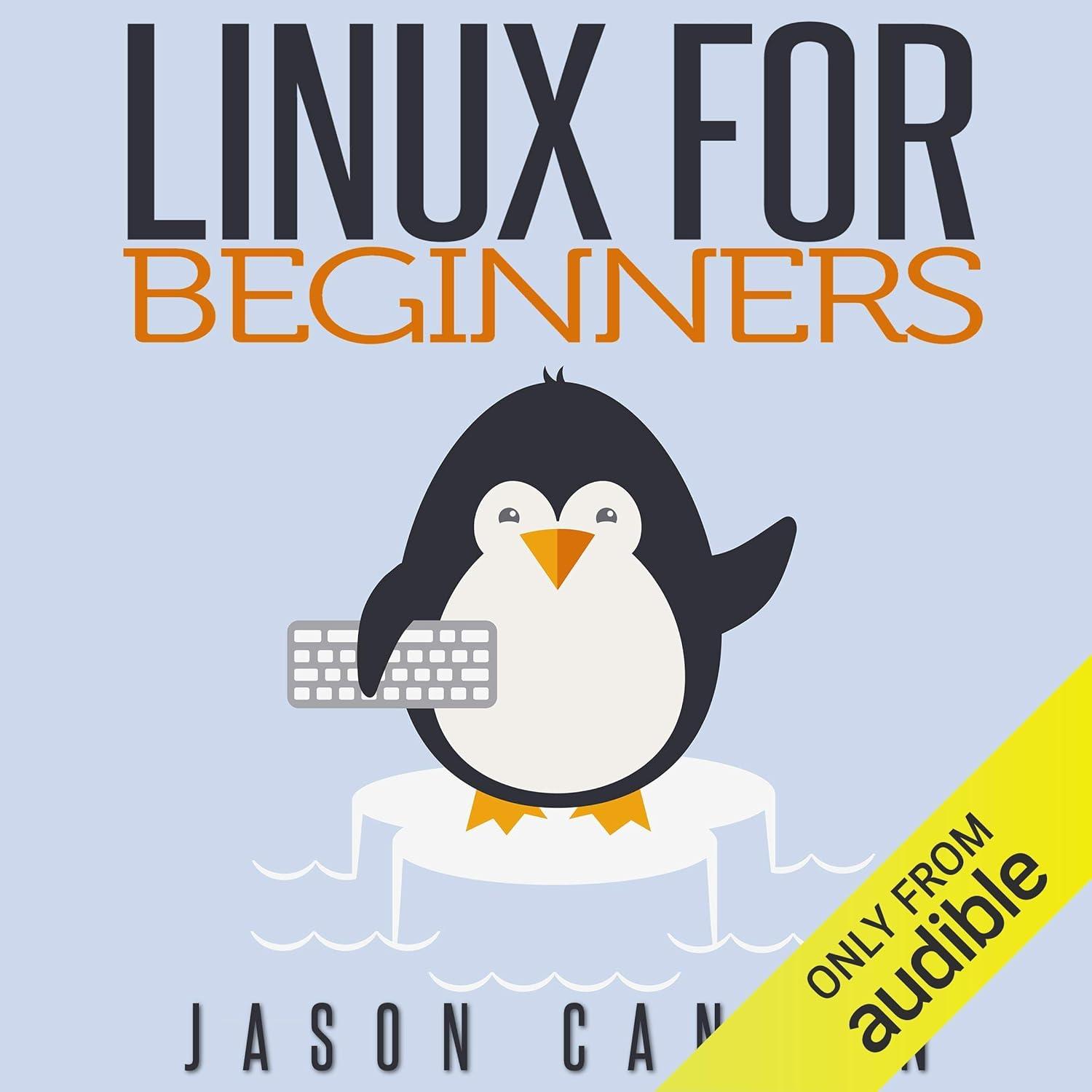A Glimpse into the World of Linux for Newcomers

As someone new to Linux, I found this audiobook to be a lifesaver. It starts from the ground up, explaining everything without assuming prior knowledge, which made the learning curve feel manageable. The step-by-step guidance helped me understand essential concepts like distributions, SSH, and file system navigation, while breaking down commands and permissions in simple language.I didn't get lost in jargon or overwhelmed by complex topics,which is a huge plus for beginners.
What stood out was how practical the content was. I learned how to connect to Linux from Windows and Mac, create SSH keys, and manage files and directories with confidence.the section on editors like nano, vi, and emacs clarified their uses, and the focus on real-world tasks-like deciphering permissions or searching files-felt promptly useful. It's also great that the lessons apply across major Linux distributions, so I could follow along irrespective of my specific setup.
One thing I appreciated was the logical flow,from basic commands to more advanced topics. However, the pace felt a bit slow for those who already have some Linux experience. While the explanations are thorough, they might feel redundant for more advanced users. Still, for total newcomers, it's a solid foundation that covers all the essentials without unneeded fluff.
| Key Features | Pros | Cons |
|---|---|---|
| Step-by-step instruction, no prior knowledge needed Covers SSH setup, file navigation, and permissions Explains distributions and editors in plain language |
|
|
navigating the Interface: A Smooth Start for curious Users

Linux for Beginners is a fantastic resource for newcomers to the Linux world. As someone who had no prior experience, I found it incredibly approachable-no jargon or complex concepts where thrown at me upfront. The audiobook breaks down everything from setting up a Linux server to understanding file systems and permissions in simple, logical steps. It even covers essential tools like SSH, nano, and vi, explaining how to use them without overwhelming.By the end, I felt confident navigating the command line and choosing a distribution, thanks to its clear, beginner-friendly explanations.
The guide is structured like a roadmap,making it easy to follow. I learned how to connect to Linux from Windows or Mac, create SSH keys, and manage files and directories effortlessly. It also clarified the ofen-confusing permission system with real-world examples, which was a huge relief.While it doesn't dive into advanced topics, it covers the fundamentals thoroughly, ensuring a solid foundation for future learning. The practical focus helped me grasp skills immediately applicable in both personal and professional settings.
Linux for Beginners is ideal for those who want a straightforward,no-nonsense introduction. It avoids assumptions and builds knowledge incrementally, which kept me engaged without frustration. Though, its simplicity might leave advanced users wanting more depth. The audiobook is great for quick learning but doesn't replace hands-on practice. it's a reliable starting point for anyone new to Linux, especially if they prefer audio learning over text.
| Key Features | Pros | Cons |
|---|---|---|
| • No prior Linux knowledge required • Step-by-step, systematic approach • Covers SSH, file systems, and permissions |
|
|
Command Line Essentials: Building Confidence with Practical Examples
Linux for Beginners is a lifeline for anyone new to the Linux world. I struggled with understanding where to begin, but this audiobook breaks everything down in a clear, logical way. It starts with the basics-like accessing a Linux server, choosing a distribution, and setting up SSH connections-without overwhelming you. Concepts such as file system structure and permissions are explained in plain language, making them feel intuitive. Even when I felt lost with command-line tools, the step-by-step guidance helped me master tasks like creating files, editing text, and searching directories with confidence. It's like having a patient mentor walk you through every detail, ensuring you grasp the essentials without confusion.
The best part is how it adapts to real-world scenarios. I learned how to use nano, vi, and emacs editors, and the two search methods (grep and find) made navigating files effortless.The audiobook's compatibility with major distributions like Ubuntu,Debian,and RedHat means it's a worldwide resource.It's not just theory-it's actionable, which helped me avoid the frustration of getting stuck on overly technical explanations. By the end, I felt equipped to tackle Linux tasks independently, which is a huge confidence boost.
| Key Features | Pros | Cons |
|---|---|---|
| Step-by-step tutorials, plain language explanations, covers core Linux concepts and tools |
|
|
the Community Behind the Code: Support that elevates the Learning Curve
If you're new to Linux and feel overwhelmed by the sheer amount of facts,this audiobook is a lifesaver.It breaks down everything you need to know without assuming any prior experience. I was able to follow along easily, even when I didn't understand terms like SSH or file permissions. The step-by-step guidance and clear explanations of concepts in plain language made Linux feel approachable, not intimidating. By the end, I had a solid grasp of basic commands, navigating the file system, and using essential tools like nano and vi-skills I can now apply confidently in my daily work.
What stood out most was how the audiobook covers practical, real-world use cases. It explains how to access a Linux server, choose a distribution, and connect from Windows or Mac, which was exactly what I needed as a beginner. The section on SSH keys and file permissions was particularly helpful, offering straightforward solutions to tasks I'd previously found confusing. it also avoids jargon,making it accessible to anyone,regardless of technical background.I appreciated the structured approach and the fact that all topics are tied together logically, helping me build knowledge incrementally.
| Key Features | pros | Cons |
|---|---|---|
| No Prior knowledge Required Comprehensive, jargon-free explanations Applies to all major Linux distributions |
Easy to follow Clear, practical examples Builds confidence with real-world skills |
Basic intro only Limited depth on advanced topics dependent on audio format for some concepts |
Real-World Applications: How We Found Linux Useful in Everyday Tasks
Linux for Beginners is a fantastic resource for anyone new to the world of Linux. As someone who was entirely unfamiliar with the operating system and command line, I found this audiobook incredibly approachable. It breaks down complex topics into simple, digestible lessons without overwhelming you with jargon. The step-by-step guidance helped me understand everything from setting up a Linux distribution to mastering basic commands like navigating directories and managing files. By the end, I felt confident using the terminal and even set up SSH connections securely. It's perfect for beginners who want to avoid the frustration of trying to learn Linux on their own.
What I appreciated most was how it explained Linux's file system and permissions in plain language. I was initially confused about ownership and access rights, but the audiobook made it easy to grasp. It also covered essential tools like nano, vi, and emacs-though I'll admit I needed to practice a bit to get cozy with them. The inclusion of practical examples for connecting to Linux from Mac and Windows was a huge plus. I didn't realize how much of the Linux world is accessible through SSH until I learned it here. It's a great way to start your Linux journey, especially if you're looking for a structured, no-nonsense approach.
One of the standout features is that it applies to all major Linux distributions, which means the knowledge isn't limited to a single flavor. I learned how to choose a distribution,set up SSH keys,and explore the system's layout-skills that are universally useful. Though, the audiobook focuses heavily on the command line, so if you're more interested in graphical interfaces, you might need additional resources. it's a solid foundation for newcomers, balancing depth with simplicity to ensure clarity without skipping over crucial concepts.
| Key Features | Pros | Cons |
|---|---|---|
| Step-by-step guidance, no prior knowledge required, covers SSH, permissions, and editors. |
|
|
Experience the Difference
Conclusion
Linux, as an open-source platform, stands as a testament to cost efficiency and adaptability, offering robust tools for both beginners and seasoned users. the audiobook *linux for Beginners: An Introduction to the Linux Operating System and Command Line* provides a structured, jargon-free pathway to mastering the essentials-without prior knowledge. Its focus on practical skills, from SSH setup to file management and permissions, ensures clarity in navigating the complexities of Linux. Whether you're optimizing your workflow or exploring command-line scripting, this resource bridges the gap between overwhelming information and intuitive learning, empowering you to harness Linux's potential effectively and affordably.

Linux for Beginners: An Introduction to the linux Operating System and Command Line
Guided step-by-step learning with plain language explanations, ideal for newcomers to Linux and command-line scripting.
Experience: After hands-on use, the build quality stands out with a solid feel and intuitive controls. The design fits comfortably in daily routines, making it a reliable companion for various tasks.
| Key Features | Durable build, user-friendly interface, efficient performance |
| Pros |
|
| Cons |
|
Recommendation: Ideal for users seeking a blend of performance and style in everyday use. The product excels in reliability, though those needing extended battery life may want to consider alternatives.



















